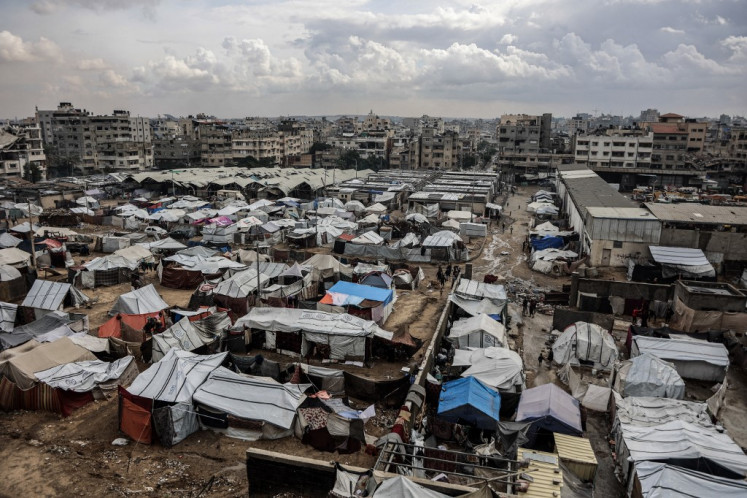Popular Reads
Top Results
Can't find what you're looking for?
View all search resultsPopular Reads
Top Results
Can't find what you're looking for?
View all search resultsHousing for whom?
What is missing from the housing agenda is the important conversation about design, access and equity.
Change text size
Gift Premium Articles
to Anyone
T
he recent controversy surrounding the government’s marquee “3 million homes” program poses a very basic question: For whom is this initiative actually designed?
The initial premise by President Prabowo Subianto’s administration seemed simple enough: Build 2 million homes in rural areas and 1 million homes in cities per year in a bid to boost flagging home ownership, especially targeting underprivileged families.
Since then, however, the government appears to have lost the script.
It all came to a head when the Public Housing and Settlements Ministry unveiled its idea earlier this month to build housing units as small as 14 square meters, sparking deep skepticism and widespread frustration.
Not only did it highlight how out of touch policymakers seemed to be, it laid bare a more fundamental assumption that a program meant to benefit ordinary people continues to ignore the everyday realities of those it aims to help.
In news interviews across Jakarta, families spoke openly about their struggles to secure even a basic quality of life; one that allows space for children to play, space for older relatives to live with dignity and easy access to workplaces and schools.
Meanwhile, consumer and urban advocacy groups have criticized the design of these “mini” homes for lacking basic features of livable houses such as proper lighting and ventilation.
The housing program, as it stands, appears to ask too much sacrifice from its intended beneficiaries.
We have previously warned against policies that reduce housing to abstract statistics, but the glib solutions being offered up suggest that lessons have not been learned.
According to a real estate industry group, the proposed shift toward smaller, higher density units is necessary to keep costs stable. But while a 14 sq m space may solve a bureaucratic target operating on market assumptions, it does little for families seeking a decent long-term living environment in Indonesia’s urban centers.
The state should be able to drive reforms that reduce the cost and risk of financing for middle-class buyers, making long-term mortgages more accessible, and palatable.
This is hardly a new development. According to the latest official estimates, Indonesia faces a backlog of roughly 15 million housing units, with many families unable to access adequate or affordable accommodation.
Rising prices and limited financing options continue to make it harder for low‑ and middle‑income households to secure a decent place to live. Furthermore, internal bickering within the administration is eating away at any credibility the government has in delivering the goods.
Meanwhile, rural areas and smaller urban centers, where housing is no less urgent, have been largely overlooked, reinforcing the perception that housing policies remain Jakarta‑centric or developer‑driven.
A more effective approach would rethink housing as a long‑term social investment. The debate should move beyond the number of units built and focus on making those units livable. This means prioritizing spaces where families can grow and communities can thrive, a concept embraced by successful urban housing efforts elsewhere.
Making this shift will require a level of trust and collaboration that has long been missing among policymakers, developers and the public.
Fortunately, in pockets of Jakarta’s progressive urban development advocates, there is burgeoning interest in alternative solutions, such as cooperatives-led housing.
For too long, the housing agenda has been dominated by questions about economic efficiency; how many units can be built and at what cost. What is missing is the equally important conversation about design, access and equity.
The discontent sparked by the “mini” homes should serve as a wake‑up call to remind authorities that housing cannot just be about numbers, but about people and places too.
The World Bank’s recent road map suggests that “people-first housing” can indeed catalyze growth, if done right, with an estimated US$3.8 billion in public investment creating 2.3 million jobs and mobilizing $2.8 billion in private capital.
It is time for the government to listen more closely, rethink its approach and create housing policies that honor the needs and aspirations of those they claim to serve.











